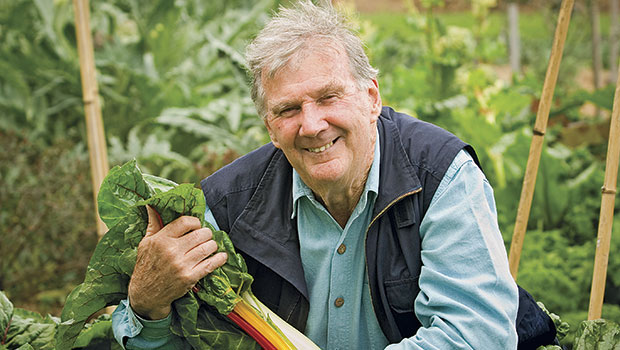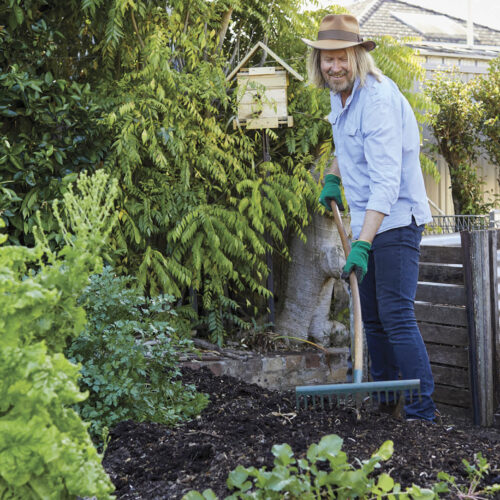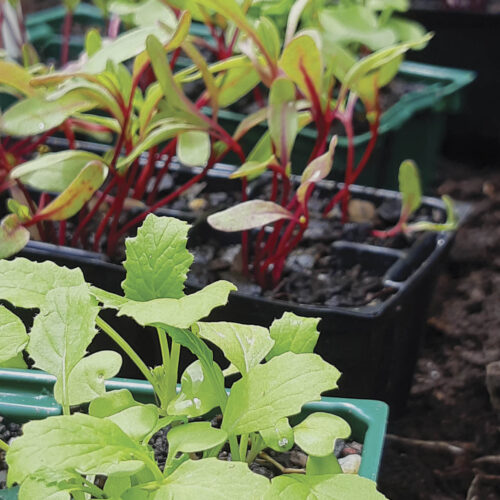What is Organics?
2021-04-12T03:33:26+10:00
Gardening legend Peter Cundall outlines the principles of growing organically – a choice many gardeners are making today, wanting to grow healthier food for their family, and to contribute to a healthy planet.
Let’s look at the basics of organic growing. Why is it that so many home gardeners are growing their own vegetables and fruit organically? Even with ornamental gardening, organic is clearly the direction many people are going. And once organic methods are taken up, why is it that so few of us return to chemicals and poisons?
These days it is interesting to listen to garden enthusiasts and an increasing number of farmers talking about and explaining their preferences. Most seem to be singing from the same hymn book if you like, putting forward almost identical reasons for what has become a life-changing conversion.
They don’t like poisons and distrust chemicals, preferring to use natural methods of growing, feeding and protecting plants. They like not only feeling extra safe when eating organically grown food, but becoming healthier and more energetic. In essence, this is what organic growing is all about.
How many of us can remember – not too long ago – those times when, on entering a plant nursery or even a garden centre, we were confronted with an awful stench of chemicals and poisons? I still recall, with horror, rows of shelves groaning under the weight of sinister-green, corrugated bottles or containers containing some of the deadliest, most persistent poisons on Earth. The penetrating stink was sometimes so intense and threatening I could only pity those unfortunate nursery employees forced to constantly breathe in this toxic air all day and every day.
Poisons and artificial, chemical fertilisers are still there of course, but fewer of them and their numbers continue to diminish. These days the typical smell of a plant nursery is more likely to be the fragrance of flowers, the earthy aroma of soil mixes and the pong from bags of manure.
What’s it all about?
So what is meant by organic growing? The term “organic” once seemed alien. A few argumentative, hair-splitting industrial chemists questioned the term. We tried to change the name to the more accurate “biological growing” but this sounded even more confusing or intimidating. So “organic” growing has stuck and now most people accept the description.
It is all so simple really. The core aim of all organic techniques is to grow food or plants of any kind without the use of poisons or disruptive chemicals. That means enriching and balancing life within the soil by using natural fertilisers and minerals.
Gardening organically also controls – but never eliminates – pests and diseases without disrupting the essential balance of life in a garden.
There are many organic methods, including biodynamics, permaculture, no-dig techniques and plain, simple organics. All succeed because they have in common a reverence for the soil and the recognition that it is most vitally important of all our resources – apart from people. In short, healthy soil means healthy produce and therefore, healthy people.
It may seem strange, but organic growers rarely feed their plants. They feed the soil and let the plants take up nutrients only as they are needed. This is why soil enrichment in an organic vegetable garden is a constant process.
After crops have been grown and harvested, the soil should always be fertile enough to grow crops of other vegetables.
Companion planting
Organic growers understand the benefits of growing certain, unrelated plants together in the same beds. A common example of successful companion planting is when alliums such as garlic, leeks, shallots, onions and spring onions are grown between rows of appreciative root vegetable including carrots, parsnips and beetroot. They all help and to some extent protect each other and we get better crops all round.
Another good example is the odd but passionate relationship between pumpkins, zucchinis and cucumbers on one hand and sweet corn on the other. All grow better, stronger and healthier in each other’s company.
We also put to good use the amazing ability of legumes such as peas and beans to not only to provide nutritious food but to extract and fix nitrogen from soil atmosphere.
When large amounts of nitrogen are lost due to previous crops of greedy vegetables such as cabbage, cauliflower, broccoli, silverbeet and other leaf vegetables, it is replenished by growing following crops of peas and beans. Legumes can also be used to add nitrogen to the soil before growing nitrogen-hungry leaf crops. Companion planting can be incorporated into a crop rotation system (see page 24) to help ward off pests and disease.
Adding organic matter
One of the most valuable means of soil enrichment is by sowing “green manure” crops (see page 44), usually during winter or times when beds happen to be vacant. Such crops include leafy grasses such as rye corn and feed oats mixed with annual legumes such as clover, tic beans and lupins. In some districts, mustard seed is added for nematode control.
When these green manure plants have grown tall and thick, they are smashed down while still green, sappy and lush and immediately dug deeply into the soil. This soft green material decomposes at great speed, filling the soil with moisture-retaining organic matter.
Decayed organic matter in any form – especially well-made compost – is the basis of soil fertility because, as well as holding water like a sponge, it encourages earthworms and countless millions of micro-organisms including valuable forms of bacteria, moulds and other fungi.
Earthworms eat organic matter, converting it into worm casts, a perfect fertiliser and soil conditioner. By feeding the soil we are really feeding the living organisms that make up healthy soil.
Peter Cundall has used these gardening principles for years, and although this article was originally written in 2013, these ideas still apply today. Happy gardening – and healthy harvesting!






